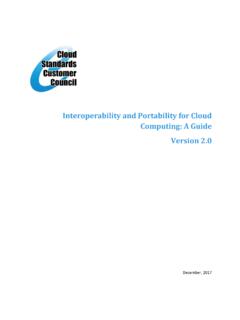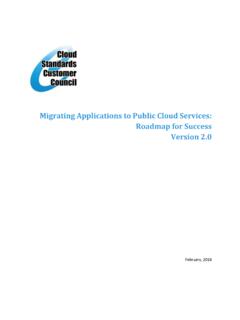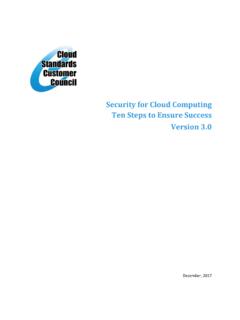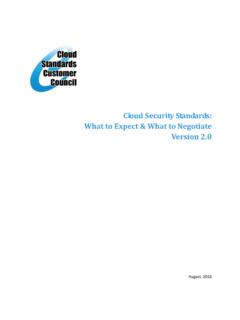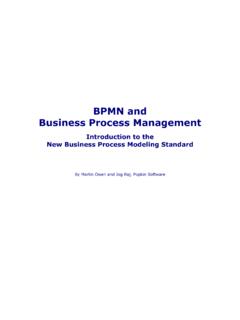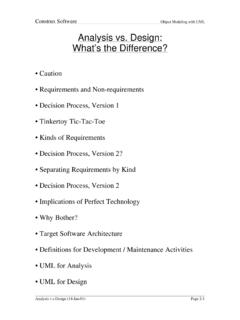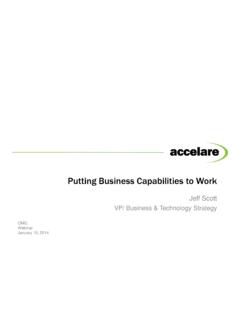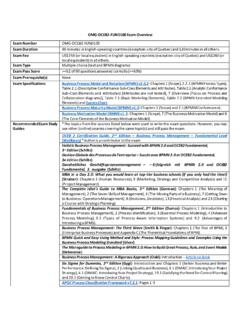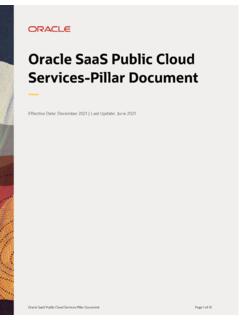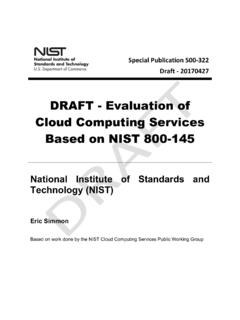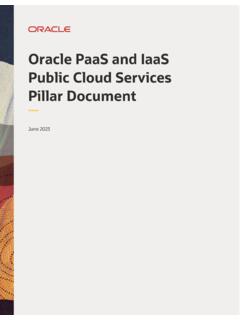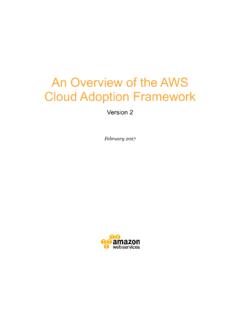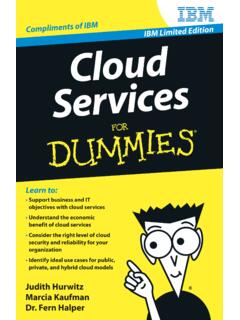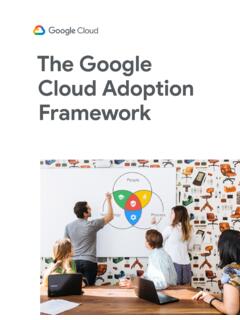Transcription of Practical Guide to Cloud Management Platforms
1 Practical Guide to Cloud Management Platforms July, 2017. Contents 3. Executive Overview .. 4. Defining Cloud Management Platforms and the Evolving CMP Market .. 4. Challenges of Hybrid Cloud services .. 5. Functions of a Cloud Management platform .. 6. The Cloud Management platform 10. Evaluation Criteria When Selecting a Cloud Management platform .. 12. Deployment Considerations .. 16. References .. 17. Copyright 2017 Cloud Standards Customer Council Page 2. 2017 Cloud Standards Customer Council. All rights reserved. You may download, store, display on your computer, view, print, and link to the Practical Guide Cloud Management Platforms at the Cloud Standards Customer Council Web site subject to the following: (a) the Guidance may be used solely for your personal, informational, non-commercial use; (b) the Guidance may not be modified or altered in any way; (c) the Guidance may not be redistributed; and (d) the trademark, copyright or other notices may not be removed.
2 You may quote portions of the Guidance as permitted by the Fair Use provisions of the United States Copyright Act, provided that you attribute the portions to the Cloud Standards Customer Council Practical Guide to Cloud Management Platforms (2017). Acknowledgements The major contributors to this whitepaper are: Mike Edwards (IBM), Preetam Gawade (nCryptedCloud), John Leung (Intel), Bill McDonald (WRM Consulting), Karolyn Schalk (IBM), Karl Scott (Satori Consulting), Bill Van Order (Lockheed Martin) and Steven Woodward ( Cloud Perspectives). Copyright 2017 Cloud Standards Customer Council Page 3. Executive Overview The aim of this Guide is to provide a Practical reference to help enterprise Information Technology (IT).
3 Managers, business decision makers, system operations staffs, application architects and application developers understand the functions of Cloud Management Platforms (CMPs) and how they can be used to operate and manage applications and data across multiple Cloud infrastructures including both on- premises and public Cloud service providers. The paper also describes some of the commonly available CMPs in the market to help assist customers in making a selection of a CMP best suited to their needs. While Cloud brokerage and Cloud Management can be considered separate activities, the rise of hybrid IT architectures increases the importance of process harmonization and tools interoperability to meet evolving requirements.
4 Defining Cloud Management Platforms and the Evolving CMP Market CMPs provide a means for a Cloud service customer to manage the deployment and operation of applications and associated datasets across multiple Cloud service infrastructures, including both on- premises Cloud infrastructure and public Cloud service provider infrastructure. In other words, CMPs provide Management capabilities for hybrid Cloud environments. Gartner sets the minimum requirements for CMP offerings as: products that incorporate self-service interfaces, provision system images, enable metering and billing, and provide for some degree of workload optimization through established policies.
5 [1] Given the rapid increase in adoption of hybrid Cloud environments these minimum requirements are a base level for CMP capabilities. IT analysts claim that the average enterprise uses some combination of five or six different Cloud environments, typically a mix of private on-premises and public environments. [2] Hybrid Cloud environments are expected to grow at a CAGR of during the period of 2016-2022 to reach an aggregate of $ billion by 2022. [3] Hybrid Cloud adoption has expanded the role of IT operations and created a demand for adaptable Management tools capable of supporting the complexity of hybrid Cloud deployments.
6 The market for CMPs can be expected to increase alongside the predicted growth in use of hybrid Cloud environments. The capabilities of CMP offerings are also expected to evolve to meet the increased complexity of the target environments and more sophisticated requirements from enterprise customers. To meet the most frequently mentioned drivers for adoption of hybrid Cloud architectures cost optimization, speed of innovation, and future proofing' an enterprise CMP also needs to include specific functionality and the capability to integrate easily with a range of other enterprise Management systems, both inside and outside IT operations.
7 The CMP cannot create another, standalone system in an increasingly complex operational space. Rather, the CMP needs to serve as an integration point across existing and new systems. The challenge of IT operations today is largely in the number of data points needed to gain visibility and the variety of systems used to collect the data. A CMP needs to provide a simplified Management view Copyright 2017 Cloud Standards Customer Council Page 4. through its functionality and the aggregation and integration of data from the multiple Cloud environments. Necessary functionality includes: Access and authorization Management Resource Management across environments Financial Management relating to subscribed Cloud services Integration with the relevant target Cloud environments and enterprise internal systems Service catalogs to support self-service provisioning or resource approvals Cloud brokerage rules-based guidance for asset placement decisions Integration points can include: Service delivery systems part of self-service, approval and ongoing Management of deployment and Cloud service consumption.
8 Identity and access Management leverage enterprise SSO and role-based permissions where possible. ERP and financial systems collect metering information from the CMP for billing and invoicing, internal chargeback. Automation tools automate deployment according to rule sets and manage resource configuration. Infrastructure monitoring visibility of operational data to support SLA Management , security alerts, threat monitoring. Business process rules systems or other business systems that include rules used for such things as governance of Cloud consumption or self-service, approval flows, and billing. For mature enterprises the CMP could use, wherever possible, data, policies, and governance already defined within systems or processes.
9 For less mature or smaller organizations, configuration of the CMP. can Guide them through the establishment of these policies and processes. For all organizations the CMP. needs to provide specific functions, such as usage metering, that are not part of ordinary enterprise financial or accounting packages. Challenges of Hybrid Cloud services Adoption of hybrid Cloud services is driven by the need to reduce Cloud infrastructure spend, increase speed of delivery, improve IT resiliency, more effectively service a variety of workloads ( , high performance computing), use best-of-breed Cloud services , and avoid vendor lock-in. There are many potential benefits associated with the use of hybrid Cloud services .
10 However, hybrid Cloud can introduce new challenges that IT should be prepared to address: Copyright 2017 Cloud Standards Customer Council Page 5. Governance The use of hybrid Cloud increases the challenge to effectively maintain visibility of Cloud resources, to manage spend (including chargebacks), and to ensure quality of service. The level of complexity introduced by hybrid Cloud adoption requires strong governance. Security and protection of PII and other sensitive information Security and protection of personally identifiable information (PII) and other company confidential information are challenging when applications and data are spread across multiple Cloud services .
